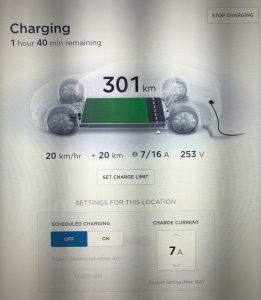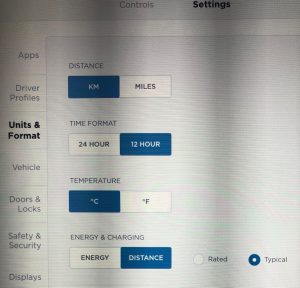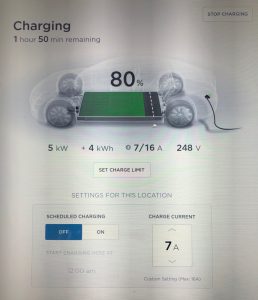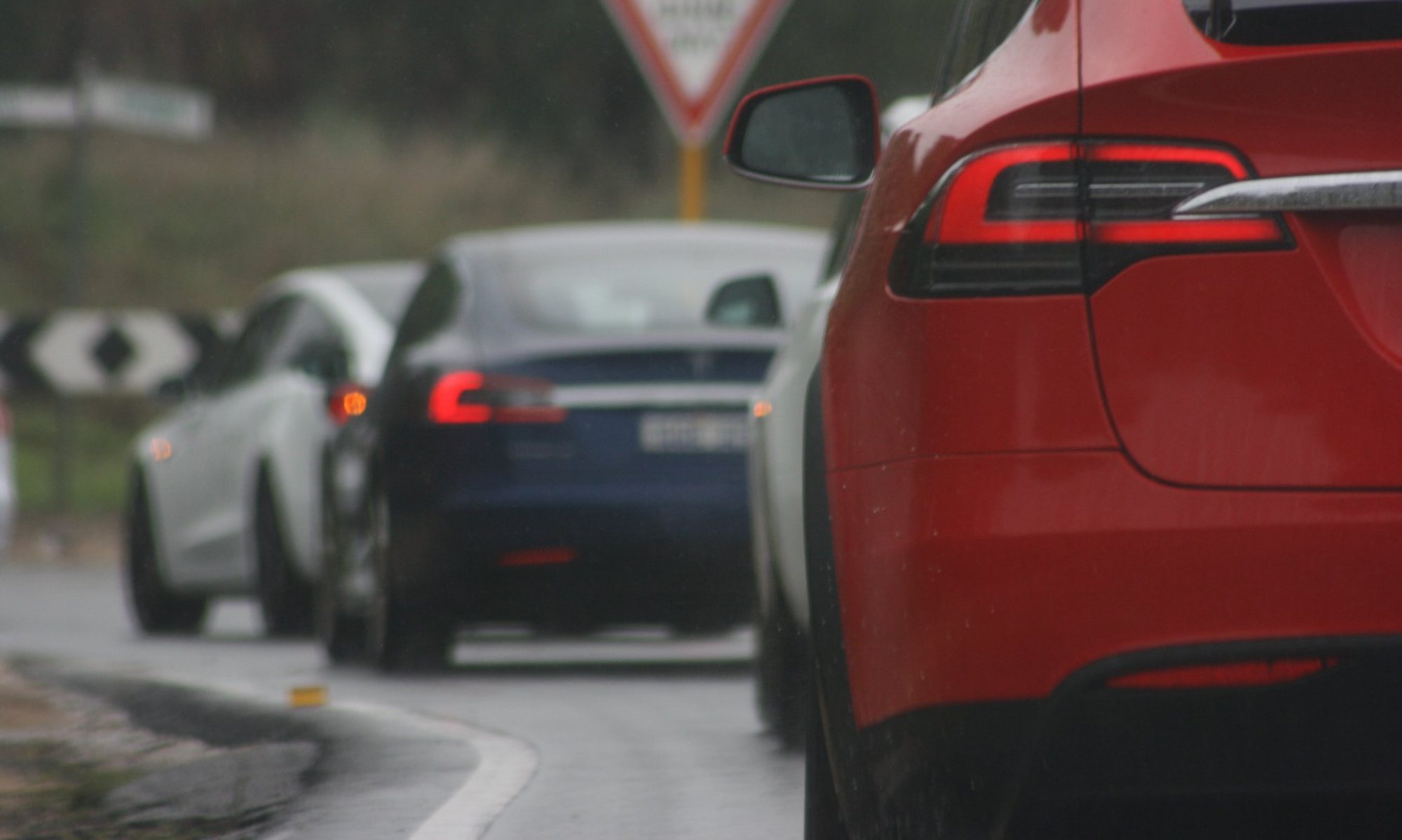So, you want more technical info? you’ve come to the right place.
This information is meant to be read alongside the main charging page – here we’ll offer a little more technical information for those that want to know more.
Units – One for every season
Charge Rate: On the main page, I talked about all the chargers in terms of their output in kW. There is a lot of confusion about charging rates, and Tesla don’t help a lot with this.
Firstly, If your car is set to display your charge in “Distance”, then your car will display your remaining range, rather than a percentage as well as show your charge rate in km/hr:

How many km it displays depends on whether you are set to display “rated” range or not.

In “rated” mode, it will display based on NEDC range of the car, which is mostly meaningless. In “Typical” mode, it should display something close to your average use. Either way, talking to other drivers about your charge-rate in km/hr is really ambiguous, and not, in my humble opinion, very useful. One other note – The charging screen also shows the average, rather than instantaneous rate, in “distance” mode while it’s charging.
If you have your settings on “Energy” instead of “Distance”, you will get your instantaneous charge rate in kW, which is much more concrete:

Here, my car is charging at 5kW and is at 80% charge on its way to 90% where I’ve set the charge limit for today.
BUT – it helpfully allows you to set a maximum charging rate in Amps – regardless of the mode you’re in! So – what does that have do do with anything? That’s a good question, and is mostly related to standards, and compliance. Here, I have my charge rate set to 7A (out of a possible 16A as shown), I can convert that to Watts by multiplying it by the voltage – which it helpfully tells us is 248V, so:
7 x 248 = 1736W or 1.7kW
..except it’s not! If I were on a single-phase charger, that would be true, but in this case, I’m on a 3-phase charger – it indicates 3-phase by putting a little “3” in a circle next to the charging Amps, so more correctly, you need to multiply the Amps by the Voltage and also by the number of phases, so:
7 x 248 x 3 = 5208W or 5.2kW
which is what it’s showing. I tend to leave my car in “Energy” mode and use the Trip view to compute range for me.
What governs charge rate?
1) How charged your battery is – When you charge, your battery will charge faster when it has less stored charge and slower as it gets full. This is physics – your battery is charged by applying a voltage higher than the batteries normal voltage causing current to flow into it. As your battery charges, its voltage rises – as it rises, the difference between the charge voltage and the battery voltage gets smaller, and therefore less current flows. So, while this starts out being limited by the charging hardware, it eventually is far more influenced by the state of charge. This “tapering” is most noticeable at DC chargers, but also happens on any charger.
2) AC – If you’re charging on AC, which is most places, your charging rate is limited by:
- The size of the onboard charger in your car – this sets a maximum rate-of-charge. The battery is charged with DC voltage, as described above, so to charge from AC, you need to convert that into high-voltage DC. This is done by an onboard charger in your car – Tesla’s standard charger is a 11kW unit by default, but on older cars, this can be doubled to 22kW by adding a second physical charger, and on newer cars, this can be software updated to 17kW. Tesla S and X have more recently been including the higher rate at no additional cost.
There are also issues with single and three-phase maximum rate depending on which type of charger you have, but these are becoming less common.
on AC, the charge rate is also limited by
- What you’re plugged into – depending on what you’re plugged into. A domestic power point is 240V/10A, or about 2.4kW – this will take a long time to charge, and really only worth using for overnight stops. A 3-phase socket (either via a tail or via Type-2 – see below) can supply up to 22kW at 32A, as described above, but you can only achieve this with an older Model S with dual chargers – Model 3 and Y top out at 16A/3P – 11kW, most Model S’s and all Model X’s top out at 24A/3P, or about 17kW. Also, as discussed below, the supplied mobile charger can only do 16A/11kW anyway.
3) DC – If you’re charging on DC, which means you’re using a Supercharger, a CCS-Combo2 (CCS2) or a ChaDeMo charger, the rate is governed by the charger. Superchargers and CCS2 max out at about 150-250kW and ChaDeMo chargers at about 50kW. However, you are also limited by your battery, small-pack (60/70/75) S and Xs seem to top out around 110kW, large-pack S and X get around 150kW, and Model 3 and Y get up to 250kW – but remember that these peak rates will only be sustained for a short while, before tapering occurs as the battery fills.
Please feel free to ask questions via email for more information.

